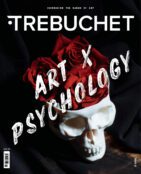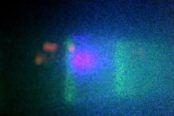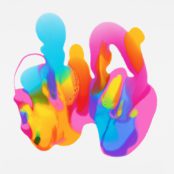[dropcap style=”font-size:100px; color:#992211;”]V[/dropcap]isual prompts can trigger all sorts of memories, as any rave survivor experiencing strobe-induced Bizarre Inc. flashback syndrome can attest.
New research from University of Wisconsin-Madison suggests that visual prompts can also disrupt memory. Which is possibly why the light that comes on when you open the fridge door makes you instantly forget why you opened it in the first place.
Interfering with your vision makes it harder to describe what you know about the appearance of even common objects, according to researchers at the University of Wisconsin-Madison.
This connection between visual knowledge and visual perception challenges widely held theories that visual information about the world — that alligators are green and have long tails, for example — is stored abstractly, as a list of facts, divorced from the visual experience of seeing an alligator.
“We can perceive the world, and then know things about the world, and a lot of those things we learn through the senses,” says Gary Lupyan, an associate professor of psychology at UW-Madison. “But once we learn them, do they still continue to depend on the senses? That seems to be the case.”
Pierce Edmiston, a graduate student in Lupyan’s lab, had volunteers answer questions that required them to quickly verify simple information about common objects.
Some of the knowledge he asked for was visual: Do alligators have tails? Are strawberries red? Do tables have a flat surface? And some was encyclopedic: Is a table furniture? Do alligators live in swamps? Are strawberries fruits?
While study volunteers answered these questions, Edmiston would deliver a burst of “visual interference” — colorful static noise — in an effort to disrupt the parts of the brain that process visual information.
“Visual interference selectively interrupted their ability to answer questions about the visual properties of objects. They had trouble trying to recall that kind of information,” Edmiston says. “But it didn’t change how good they were at accessing what they knew about the nonvisual properties of the same objects.”
Previous studies exploring the recall of visual information typically employed brain scans showing visual circuitry in the brain activating when people were asked to recall what things look like.
“That suggested a connection between recalling visual knowledge and visual processing in the brain. But it didn’t show that the visual processing centers were necessary — just active,” Edmiston says. “We’ve shown more than a connection. Visual processing appears necessary for recalling visual information because disrupting perception, even subtly, disrupts people’s ability to report what something looks like.”
Edmiston’s study was published recently in the Journal of Memory and Language, and was funded in part by the National Science Foundation.
The effect of the visual interference on study participants was not large — they were still able to answer the majority of the questions correctly — but the way the researchers were able to knock the brain off-kilter may feel familiar.
“Many people, when they try to remember what someone or something looks like, stare off into space or onto a blank wall,” says Lupyan. “These results provide a hint of why we might do this: By minimizing irrelevant visual information, we free our perceptual system to help us remember.”
Source: Eurekalert/University of Wisconsin-Madison
Image: Pixabay/Unsplash

Some of the news that we find inspiring, diverting, wrong or so very right.




















